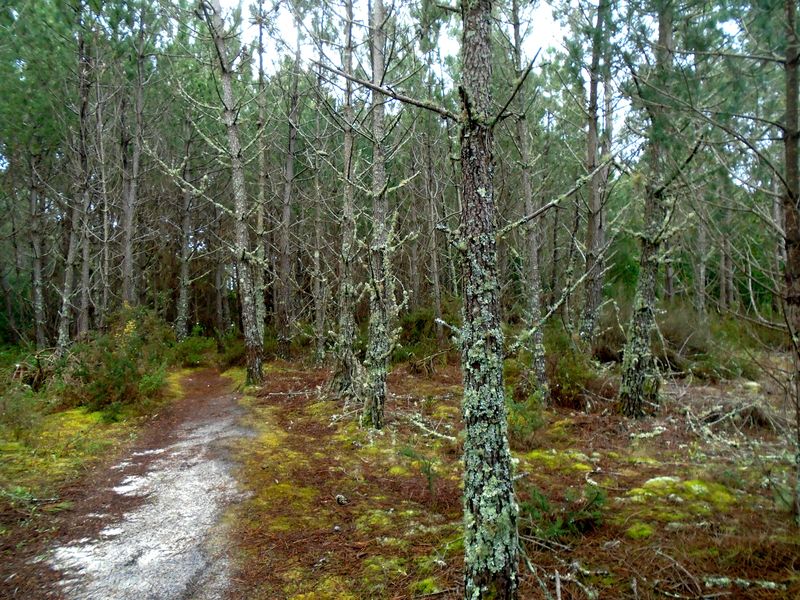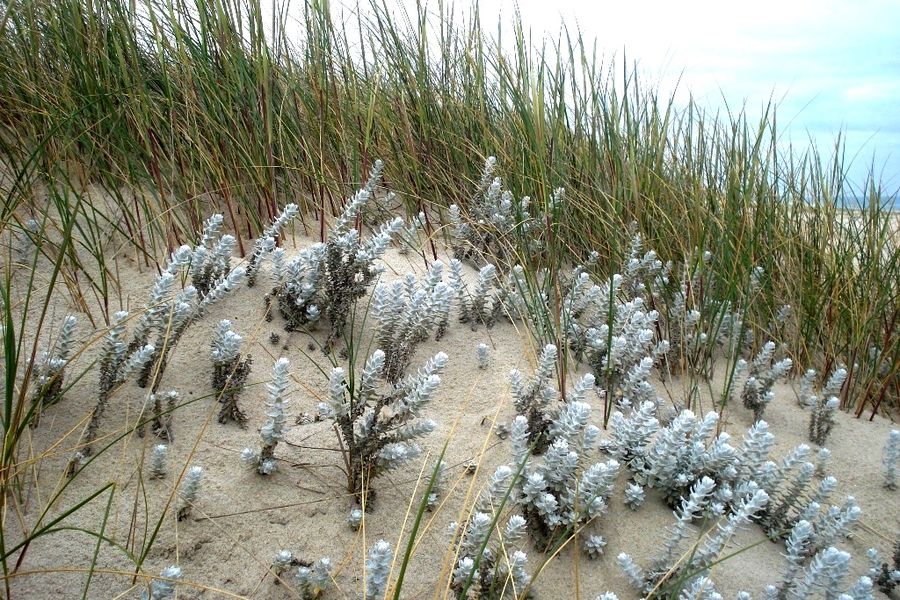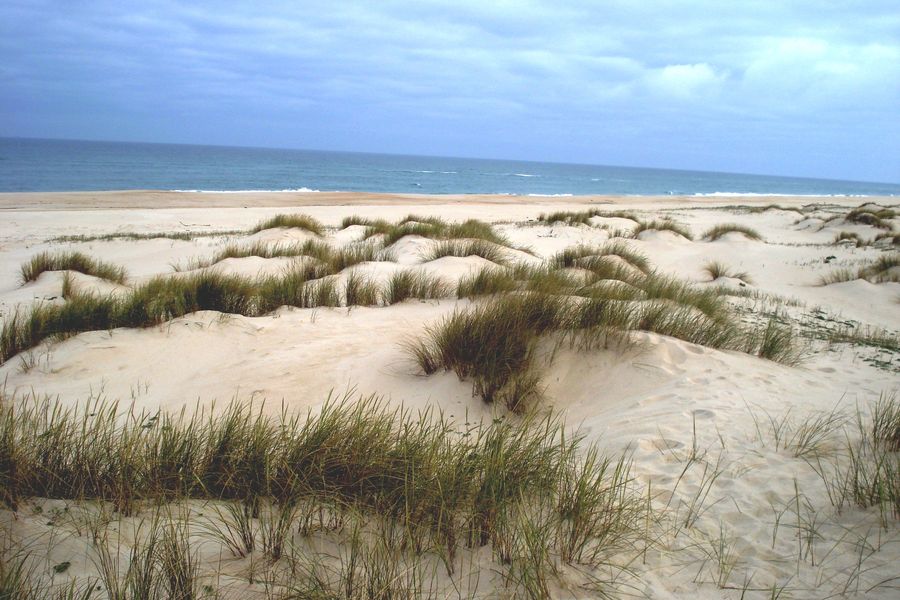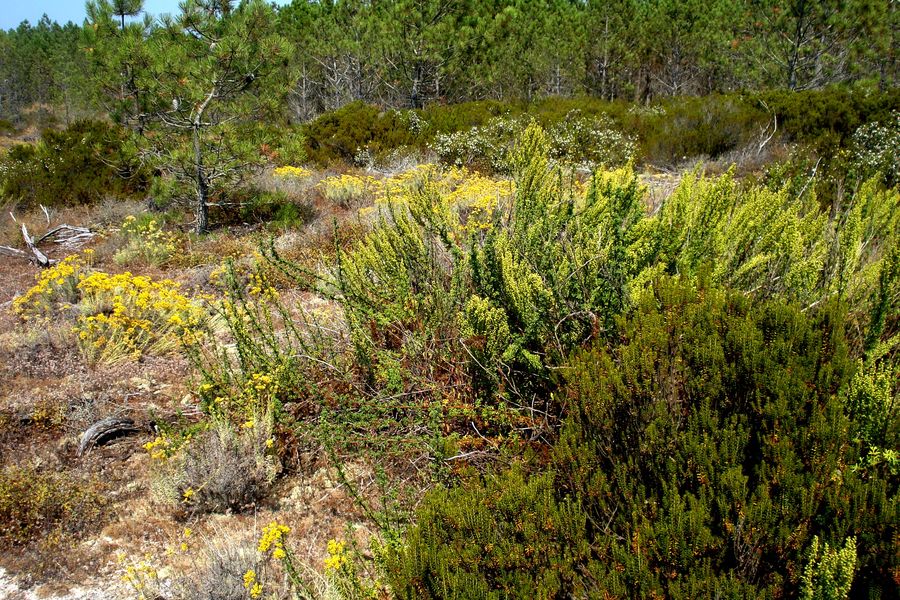Trilho de Descoberta da Natureza
Share Image
Sometimes the route is impractical, so before visiting, inquire at the Reserve services. Much of the route is on sand, so use appropriate footwear. Forest - S. Jacinto forest is associated with a forest of resinous trees, having a little more than 100 years. It was mainly used the Maritime Pine to consolidate the dunes. At present, it is a mixed forest, predominantly the resinous ones in the zones with higher elevation and, therefore, drier, and in the lower and wetter areas the hardwood species. Dunes - when you walk along a wooden walkway over the dunes, the Nature Reserve offers you the conditions to observe closely the areas of greater ecological interest of this protected area. Here it is possible to observe the natural species that constitute the habitats dunares resulting from a practically natural evolution. The stains of pines and acacias are the marks of a fire that in the 90's lashed this place. Wetlands of the Nature Reserve - the other areas of natural vegetation are zones of fresh and salt water, with a special type of flora rich in variety of species, contributing to increase the fauna diversity. These areas were reopened in the 80's. They are now a place of refuge for anatids (commonly known as ducks) of Ria de Aveiro and other waterfowl.

-
Sometimes the route is impractical, so before visiting, inquire at the Reserve services. Much of the route is on sand, so use appropriate footwear. Forest - S. Jacinto forest is associated with a forest of resinous trees, having a little more than 100 years. It was mainly used the Maritime Pine to consolidate the dunes. At present, it is a mixed forest, predominantly the resinous ones in the zones with higher elevation and, therefore, drier, and in the lower and wetter areas the hardwood species. Dunes - when you walk along a wooden walkway over the dunes, the Nature Reserve offers you the conditions to observe closely the areas of greater ecological interest of this protected area. Here it is possible to observe the natural species that constitute the habitats dunares resulting from a practically natural evolution. The stains of pines and acacias are the marks of a fire that in the 90's lashed this place. Wetlands of the Nature Reserve - the other areas of natural vegetation are zones of fresh and salt water, with a special type of flora rich in variety of species, contributing to increase the fauna diversity. These areas were reopened in the 80's. They are now a place of refuge for anatids (commonly known as ducks) of Ria de Aveiro and other waterfowl.
-
Center
-
Aveiro
-
S. Jacinto Dunes Nature Reserve
Base Characterization
-
PTZPE0004 Ria de Aveiro
PTCON0061 Ria de Aveiro
-
Instituto da Conservação da Natureza e das Florestas, I.P.
Route Characterization
-
Access coming from north:
- A29, exit north Ovar towards Furadouro, Torreira and S. Jacinto or
- A1, exit at Fair node towards Ovar and follow the same route.
Access coming from south:
- A1 or A25 exit at Estarreja node. Follow towards Estarreja, Murtosa, Torreira and S. Jacinto;
- Aveiro, follow towards the beaches. Turn toward the Commercial Port, and the Forte da Barra in ferryboat, make the crossing to S. Jacinto.
By train - exit at Aveiro station. There are buses to the fort of Barra where you can take the boat to S. Jacinto.
Note: Natural Reserve information services are 1 km away from the village of S. Jacinto in N327. The boat and the ferryboat have Summer and Winter schedules.
GPS: 40.670948, -8.725001
-
Yes
-
Information center of Dunas de S. Jacinto Nature Reserve
-
Information center of Dunas de S. Jacinto Nature Reserve
-
7.1 km
-
All year avoiding, however, periods of heavy rain (subject to flooding)
-
3 h
-
10 meters (between 2 and 12 m)
-
Easy
-
Ring road
-
Todos os grupos
Supports in place
-
Diretional signs and some detailed information.
-
Picnic area.
Topographic Profile
Bring water and a snack, hat, comfortable walking shoes, insect repellent and sunscreen. If you have it bring binoculars.
Access coming from north:
- A29, exit north Ovar towards Furadouro, Torreira and S. Jacinto or
- A1, exit at Fair node towards Ovar and follow the same route.
Access coming from south:
- A1 or A25 exit at Estarreja node. Follow towards Estarreja, Murtosa, Torreira and S. Jacinto;
- Aveiro, follow towards the beaches. Turn toward the Commercial Port, and the Forte da Barra in ferryboat, make the crossing to S. Jacinto.
By train - exit at Aveiro station. There are buses to the fort of Barra where you can take the boat to S. Jacinto.
Note: Natural Reserve information services are 1 km away from the village of S. Jacinto in N327. The boat and the ferryboat have Summer and Winter schedules.
GPS: 40.670948, -8.725001














